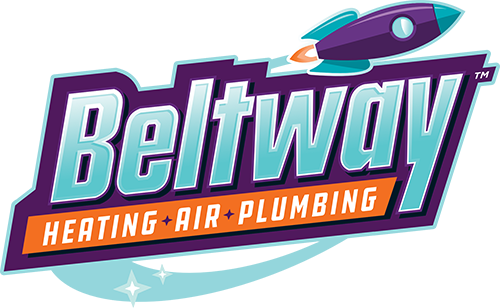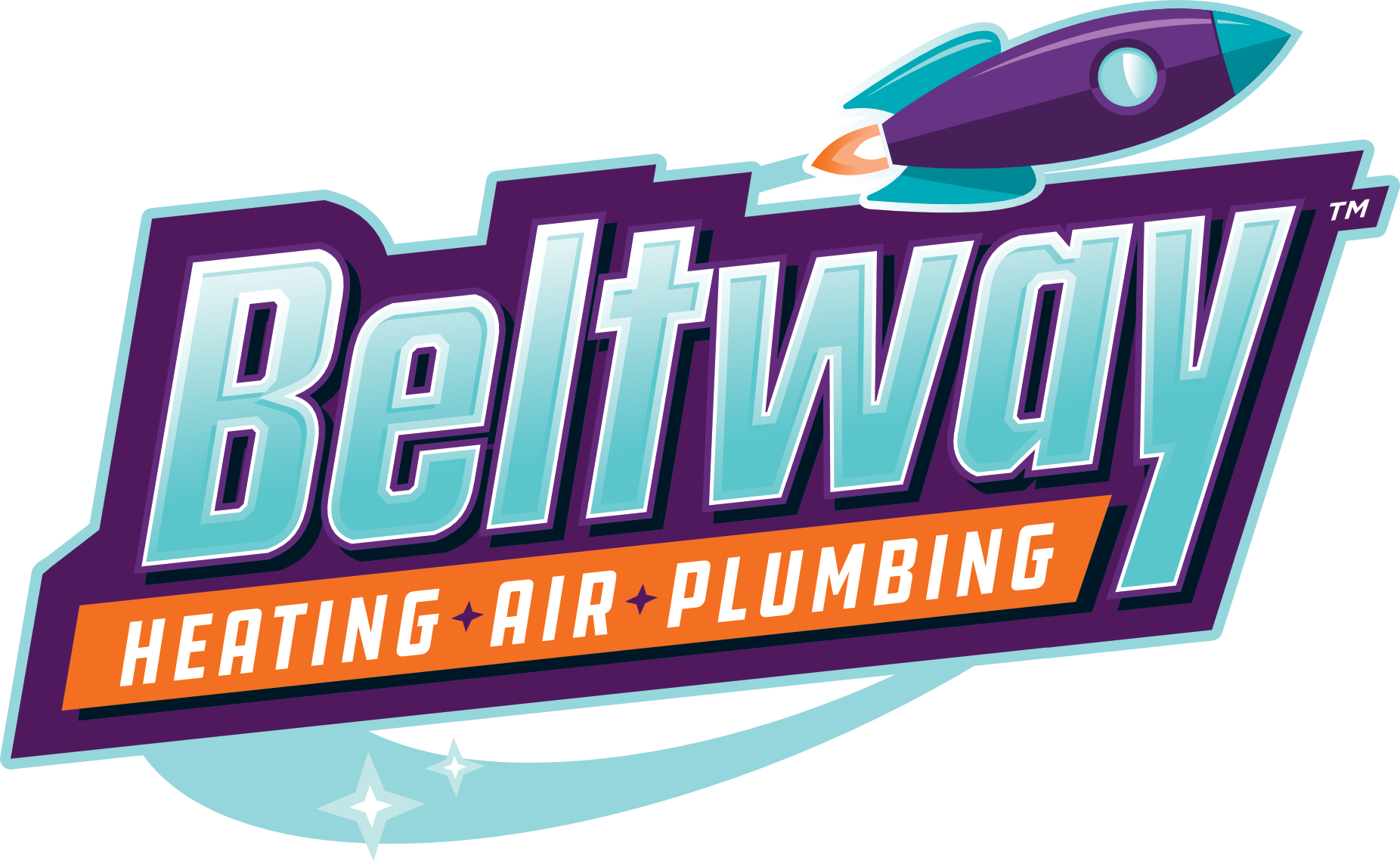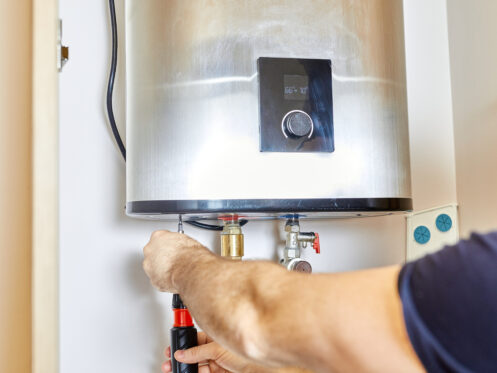On-demand water heaters are among the hottest trends in home improvement. While they’re not a new concept, lowering prices and advancing technologies have made them more compelling. Let’s explore the pros and cons to see if a tankless system is right for your home.
Power and Fuel Options
Tankless water heaters are available in electric and fuel-burning configurations. Which type is right for you depends on many factors, including your household’s peak hot water demand.
Electric
Electric water heaters are generally cheaper to purchase and install because they’re less complex. Still, they often cost more long-term due to the cost of electricity. A small home with low hot water demand is the one scenario where an electric on-demand water heater is more economical. In other scenarios, fuel-burning systems are usually best. If you must have an electric unit, consider a hybrid heat pump water heater as a highly efficient alternative.
Fuel
For most households, fuel-burning on-demand water heaters are the most cost-effective for long-term use. Natural gas is the ideal fuel because it’s cheaper and more convenient. If your property lacks access, you can opt for either fuel oil or liquid propane.
Fuel-burning systems require gas lines and exhaust systems. If you’re converting to a fuel-burning system, the conversion will be an additional but one-time cost. With fuel-burning water heaters, you also have the option of a condensing system. These models have a second heat exchanger to help avoid heat losses through the flue.
Electrical Panel Considerations
All tankless water heaters require electricity, meaning gas models don’t function during power outages either. If you have an older home, you may need to upgrade the electrical panel to accommodate the new water heater. This may be necessary to increase the amp capacity or provide room for an additional dedicated circuit. Even in newer homes, you may need a whole-home surge protector. The National Electrical Code added it as a requirement in 2023.
Hard Water Considerations
Water hardness refers to the amount of calcium carbonate in your water supply. Hard water is a concern for all water heaters because it decreases efficiency, increases operating costs, and lowers expected lifespan. Yet, it’s even more problematic for on-demand systems because they are more sensitive and don’t have a tank. If you have moderately hard water, consider adding an anti-scale device to your new water heater. If your water ranges higher on the hard water scale, consider a whole-house water softener instead.
Equipment & Installation Costs
Tankless water heaters cost more to purchase and install than their traditional tank counterparts. Homeowners should expect to need a bigger budget by at least 25% and as much as 50%. There may be additional costs, such as a gas conversion and electrical panel upgrade. That said, you shouldn’t have to pay those costs each time you replace the water heater.
Installation Footprint
Traditional water heaters require significantly more space due to the tank. Most on-demand water heaters, on the other hand, are wall-mounted and take up little space. If you currently have a water heater closet, you can repurpose it. You can install a tankless water heater in your garage without taking up valuable storage space. Other popular installation sites include attics and basements so that the water heater equipment is out of sight.
Less Risk of Leaks and Water Damage
Leaks are a much bigger concern with tank water heaters. Consider that the average model can dump 40 gallons or more of water onto your floor quickly. Tankless water heaters do leak, but it’s generally a drip from a bad valve. They rarely result in significant water damage.
Sizing Tankless Water Heaters
Estimating the needed capacity for an on-demand water heater is more complex than with standard water heaters. Each fixture and water-using appliance requires a certain flow rate, which we measure in gallons per minute (GPM). You need a water heater that delivers a flow rate that meets or exceeds your household’s peak demand. Peak demand is the combined GPM for all the fixtures and appliances you want to run at the same time.
Another consideration is temperature rise. Rise is the difference between the temperature of your water supply and the target temperature of your hot water. Manufacturers indicate GPM within the context of temperature rise. This is why the same model will provide a lower flow rate in a northern climate than in a southern one.
Considerations for Large Homes
It’s more difficult to find the ideal location for a tankless water heater in a larger home. This is due to the longer distances the water travels. It can result in more noticeable delays and the cold-water sandwich effect. Many systems now come with a recirculating pump to help alleviate this problem. Homeowners can strategically add recirculating pumps and compact storage tanks. In very big homes, an installer may recommend installing multiple on-demand water heaters rather than a central model.
The Option to Oversize Your Water Heater
Have you ever wished you had access to more hot water, such as during the holidays? That isn’t practical with a tank water heater because you’ll pay for the added capacity daily. With an on-demand water heater, it’s an economical option. You’ll pay more initially and when you use the added capacity but not at other times.
Reduced Operating Costs & Carbon Footprint
A big selling point of modern tankless water heaters is lower energy consumption. That results in a smaller household carbon footprint and reduced month-to-month water heating costs. How much you’ll save depends on how much hot water you use. The Department of Energy estimates a 24% to 34% reduction in energy use for the average household. Average in this context means 41 gallons or less of hot water used daily. Households that use twice as much hot water or more may only experience energy savings between 8% and 14%.
Lower Total Cost of Ownership
While on-demand water heaters cost more up front, you can recoup that added expense through lower operating costs. Another consideration is that tankless water heaters typically last longer. You can expect a 15-year lifespan with regular maintenance, and many systems can last 20 years or more. You’ll notice that manufacturer warranties tend to reflect this expectancy. There are even models available with 25-year warranties.
Energy Incentives
Energy incentives can significantly reduce your initial costs and, in some cases, even your out-of-pocket expenses. The Environmental Protection Agency awards ENERGY STAR certification to water heaters that meet its energy standards. Most incentives require that label. That includes the federal tax credit. It also includes rebates available through utilities, manufacturers, and other private groups. To see which offers are available to you, you can search the ENERGY STAR website using your zip code.
Tank & Tankless Water Heater Installation in New River Valley
Beltway Air Conditioning, Heating & Plumbing is a residential and commercial plumbing contractor serving Hanover, MD and the surrounding areas. Our company has a wide selection of top-rated water heaters in stock and offers many specials. Our licensed plumbers install tank and tankless systems and all brands and models. To schedule an on-site installation consultation, call today, or book online through our website.





